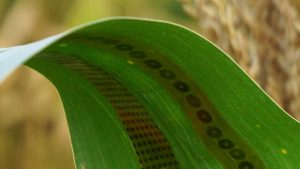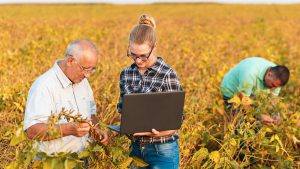Cropside: BLB damage on the rise
AGRONOMIC INFORMATION FROM ONTARIO'S CROP SPECIALISTS
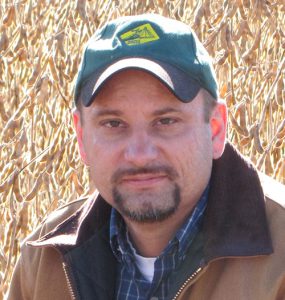
Ministry of Agriculture, Food and Rural Affairs
BEAN LEAF BEETLE (BLB) damage is on the rise in some parts of Ontario. There has been a decline in the use of insecticide seed treatments on soybeans over the last few years which has contributed to this increase. Damage to soybeans can appear early in the season as leaf feeding but the most economic damage occurs in summer as beetles feed on pods. Pod feeding is especially problematic for IP growers as seed quality can be greatly reduced.
The way to distinguish a BLB from other insects is by the small black triangle behind the head. Bean leaf beetle adults vary in colour, but always have a small black triangle visible behind the head. They may or may not have four spots and are about 5 mm (1/5 in.) in length.
Defoliation injury by bean leaf beetles is generally not serious in Ontario except early in the growing season if populations are very high. Feeding appears as small round holes between the veins of the leaves. Cotyledons and seedling plants can be clipped off by heavy populations. Late-season pod feeding is usually the biggest concern in Ontario. Bean leaf beetles feed on the surface of the pod, leaving only a thin film of tissue to protect the seeds within the pod.
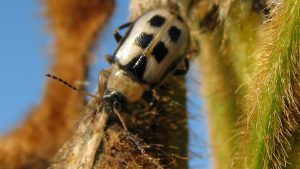
These lesions increase the pod’s susceptibility to secondary pod diseases such as alternaria reducing seed quality. Pods may also be clipped off the plant. In addition, BLB is a vector of bean pod mottle virus. The virus causes the plant and seed to become wrinkled and mottled, reducing the quality of the seed.
If 10% of pods have feeding injury and the beetles are still active in the field, a spray is warranted. Days-to-
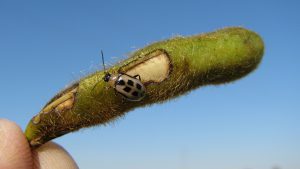
harvest intervals should be considered before spraying.
Life cycle: BLB overwinters as adult beetles in woodlots, field edges, and soil debris. In April, the adults become active and will start feeding on emerging soybean plants. Females will then lay their eggs at the base of soybean plants. These eggs will hatch and new adults will start feeding on soybean foliage and pods in July and August. •























